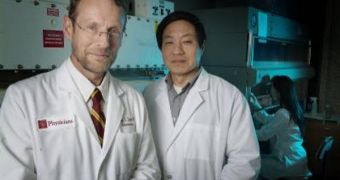One of the main causes for blindness in the United States is retinopathy, a degenerative eye condition that shows signs of progressive vision loss, until ultimately all sight disappears completely. However, there may still be hope for the countless patients suffering from the disease, as experts from the University of Oklahoma have recently identified a natural-occurring compound, which seems to be able to alter the course of the disease and advert it. Results of the study appear in the latest issue of the American Diabetes Association's journal Diabetes.
Retinopathy is especially common in Type 1 and Type 2 diabetes sufferers, as the disease has been linked to the onset of a special form of retinopathy for a long time. But now, as the new, natural compound proved able to significantly influence the inflammation and blood vessel formation processes usually associated with this type of vision loss, experts hope to soon be able to create eye drops that would essentially curve the development of the disease. If they are successful, they could be responsible for saving the vision of up to five million American diabetic retinopathy sufferers.
“There is no good treatment for retinopathy, which is why we are so excited about this work. This opens an entirely new area for pharmaceutical companies to target,” Principal Investigator Jay Ma explains the project. He is also a research partner at several institutions, including the UO Health Sciences Center, the Dean A. McGee Eye Institute, and the Harold Hamm Oklahoma Diabetes Center.
In the early stages of retinopathy, blood vessel growth begins to adversely affect the photo-sensitive layer of cells at the back of our eyes, called the retina. They do this either by swelling and leaking out fluid in their surroundings, or by growing in abnormally high numbers on the surface of the retina itself. Over time, as more and more of these blood vessels accumulate, they begin to impair vision, until they finally make the diabetes patient go blind.
When the UO researchers used nanotechnology to deliver their new compound to the patients' retinas, they noticed that the active substance prevented leakage, blocked inflammation and kept unwanted blood vessels undeveloped. They are currently testing to see if their new compound works on cancer and macular degeneration as well, as these too are extremely severe diseases of the eyes.

 14 DAY TRIAL //
14 DAY TRIAL //